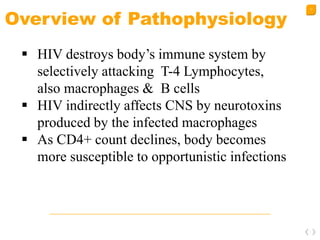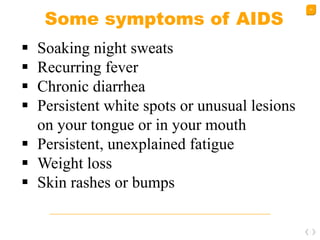The document provides a comprehensive overview of HIV/AIDS management, including its clinical characteristics, causative agents, and treatment strategies. It details the epidemiology of HIV, risk factors for infection, diagnostic procedures, and the different stages of HIV infection leading to AIDS. Additionally, it outlines the current approaches for antiretroviral therapy and prevention measures to control the spread of the disease.


































































